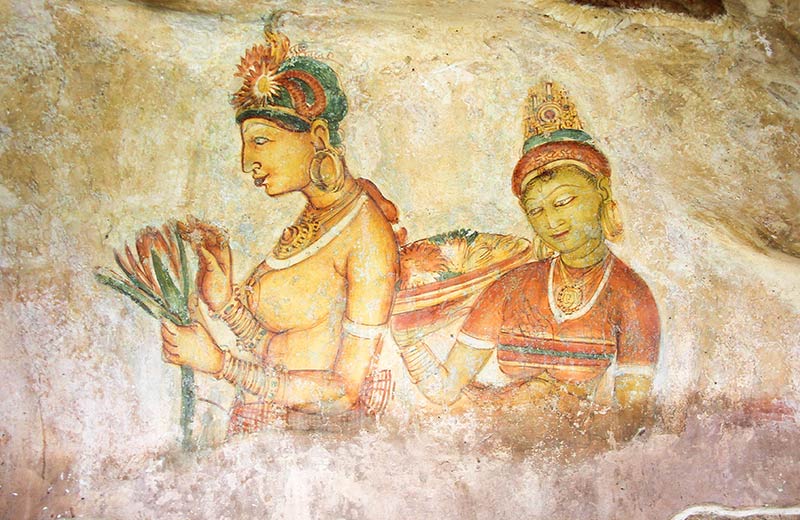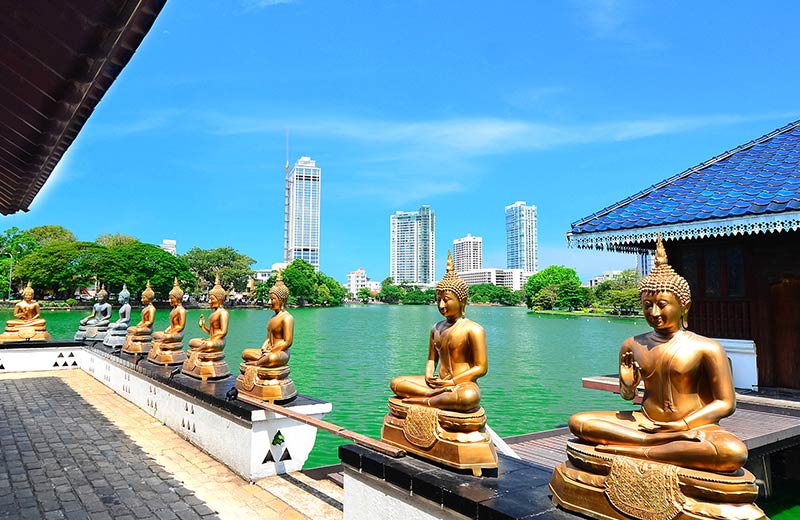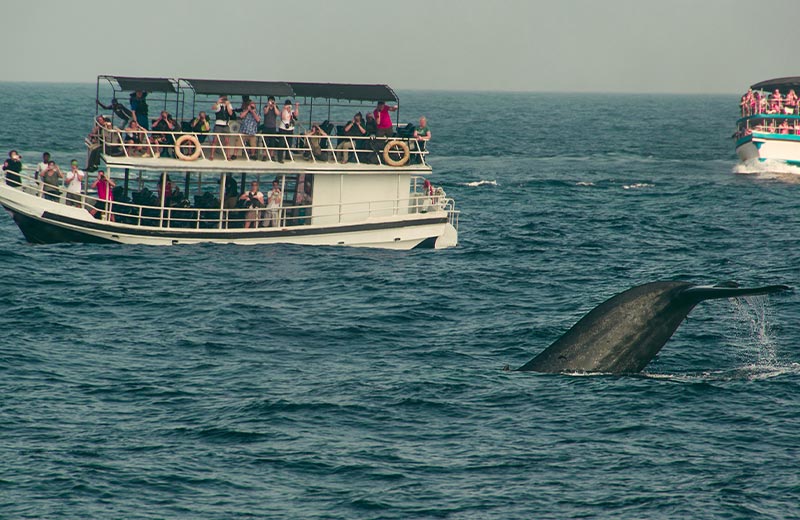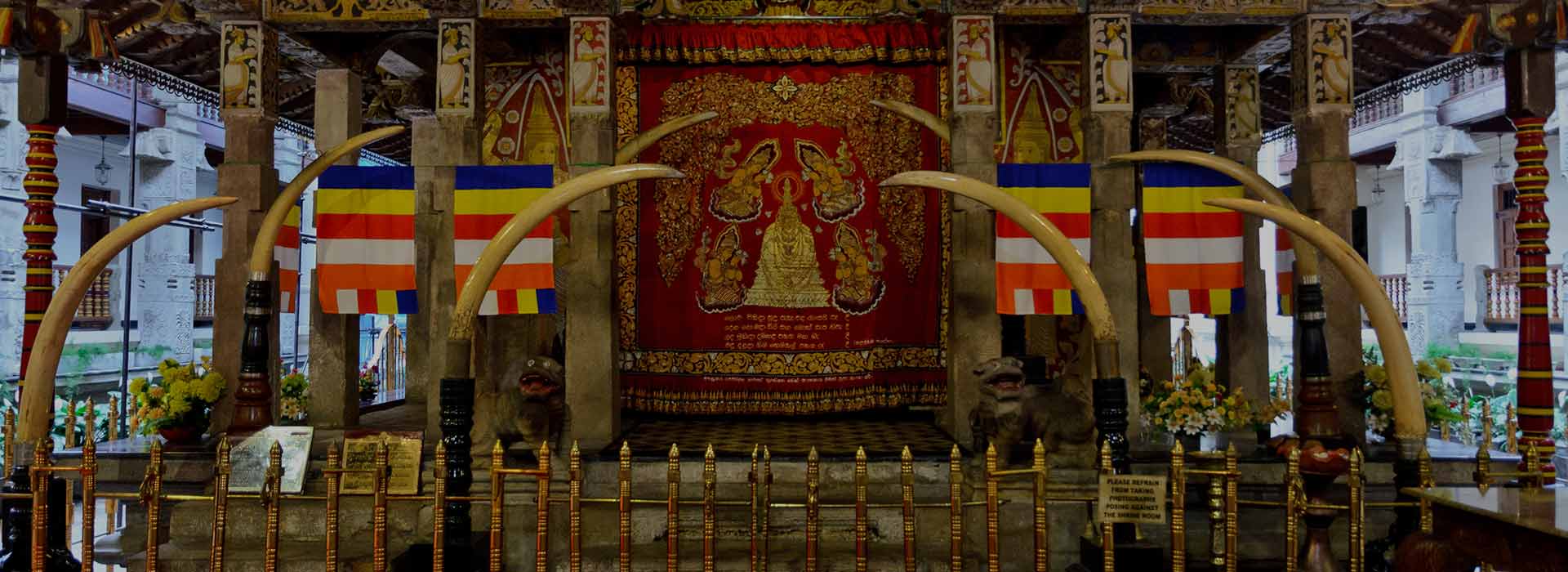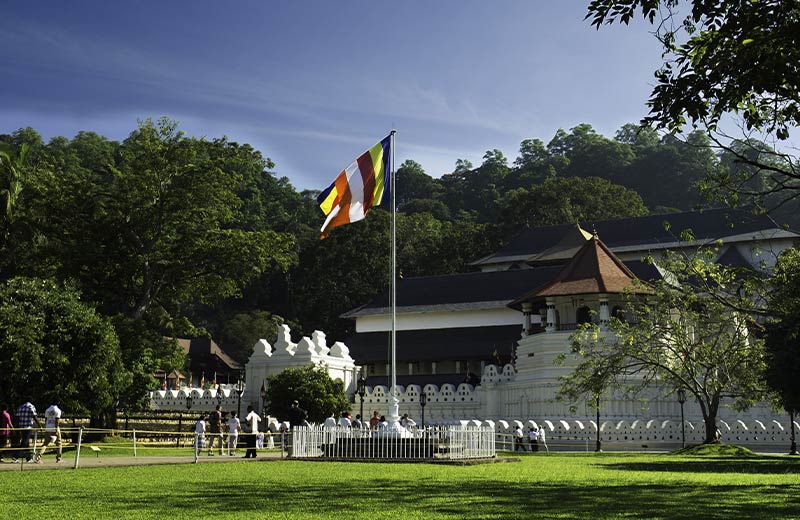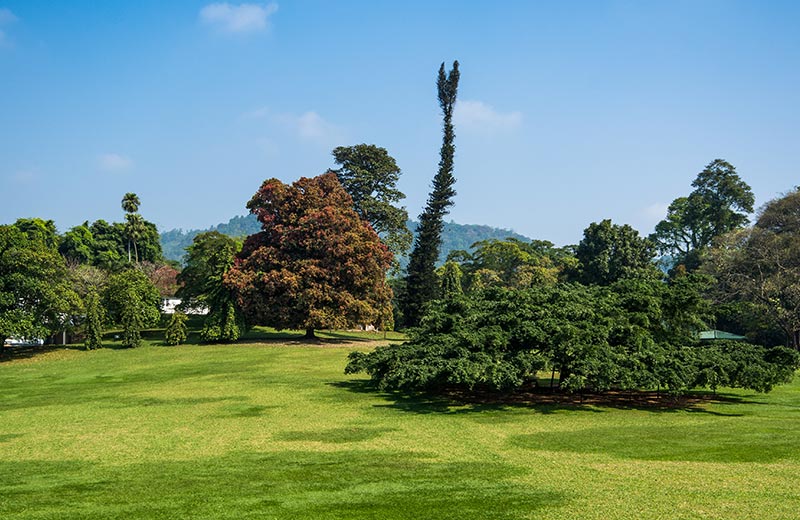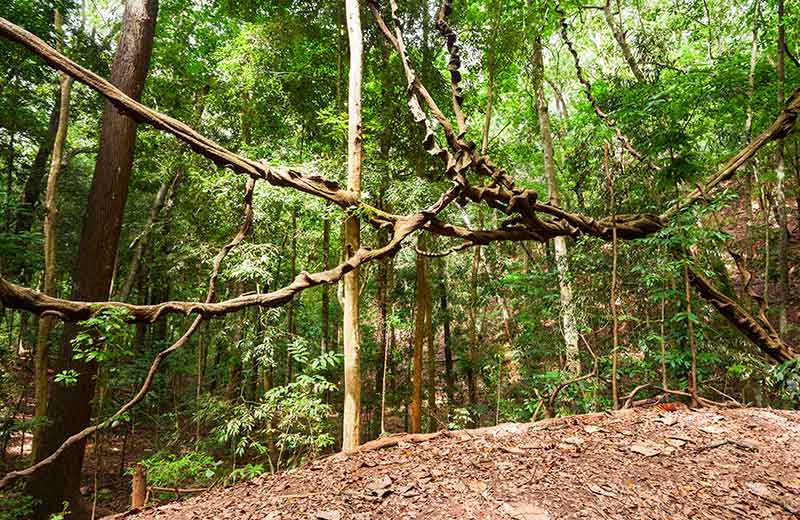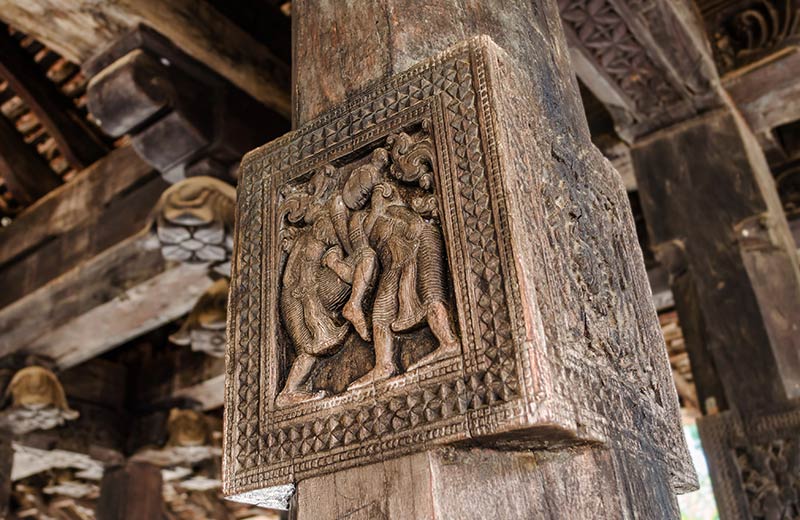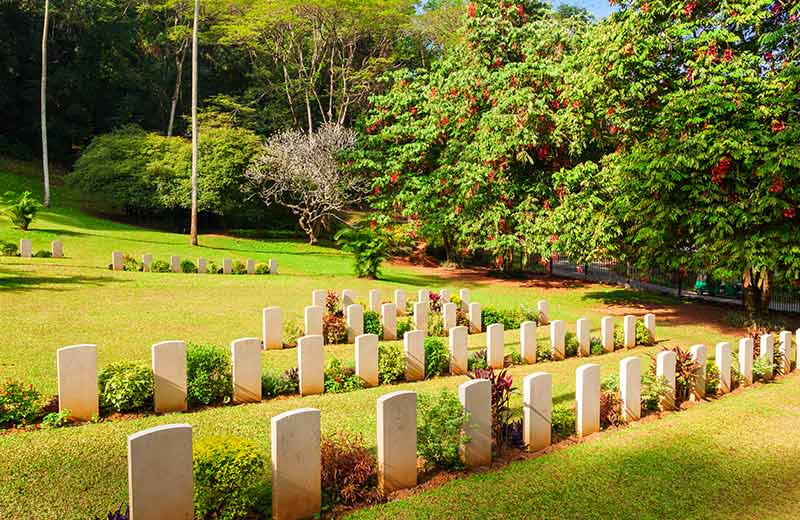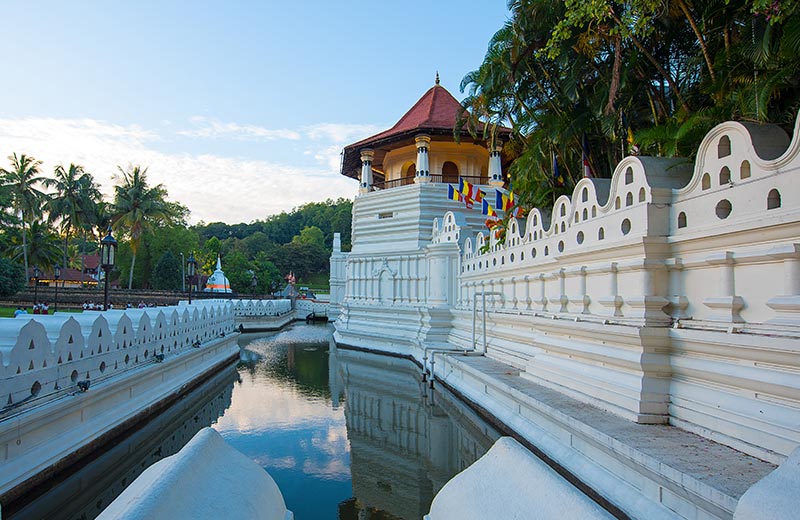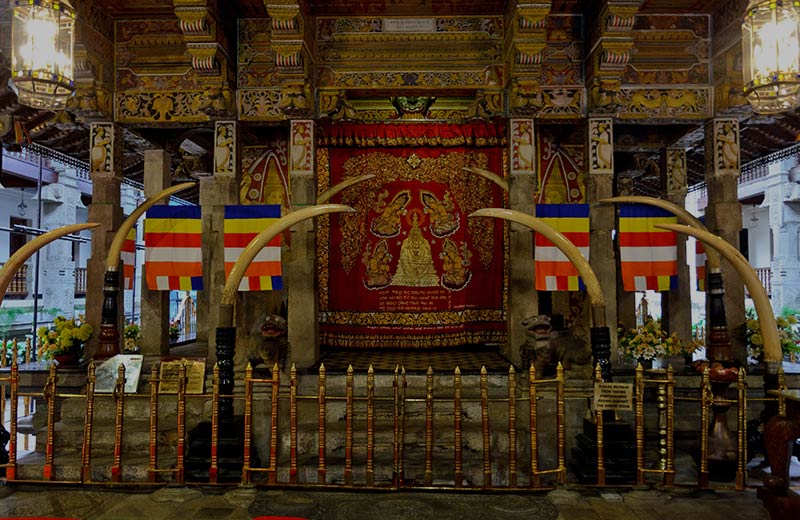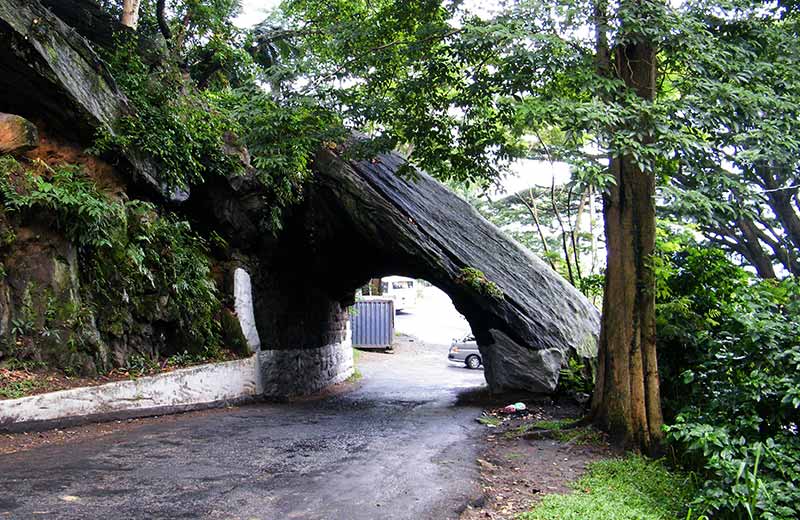At this time, Buddhism had already taken root in Sri Lanka and was practiced by the royals and people. The reigning King Mahasena of Sri Lanka had an existing friendship with the king of Kalinga, and based on this friendship, Guhasiva decided to dispatch the tooth relic to Sri Lanka for safe keeping. He chose Prince Danta, the husband of his daughter Hemamala, to carry the tooth relic across the ocean to Sri Lanka. Although Prince Danta was initially skeptical about the journey, he had no choice but to honour the wishes of the king who succumbed to injuries on the battlefield. Taking on the guise of a Brahmin couple, Danta and Hemamala, in whose hair the sacred tooth was hidden, proceeded on their journey to Sri Lanka. The Dhātuvamsa records much of the history of the sacred tooth relic, as well as the many hardships Danta and Hemamala had to face on their journey to the island.
The Tooth Relic Arrives in Sri Lanka
By the time Danta and Hemamala arrived on the shores of Sri Lanka, King Mahasena had passed away and his son King Kirti Sri Meghavanna had ascended the throne at Anuradhapura, the capital city. The sacred tooth relic was well received by the king who was a pious Buddhist. He enshrined it in an edifice called the Dhammacakkageha, within the royal enclosure, where it was worshipped by the people. The tooth relic remained in the custody of the rulers of Anuradhapura until King Vijayabahu moved the capital to Polonnaruwa in the 11th century. Vijayabahu and his successors continued to venerate the tooth relic and build shrines in various locations to house it.
A Symbol of Kingship
A legend soon began to circulate regarding the relic, stating that whoever possessed it had a divine right to rule the land. Thus, it is not at all surprising that the great rulers of the past made it part of their royal duty to protect and venerate the sacred tooth. The relic followed the kings of the island as they moved the capital city of the kingdom to various locations. It helped the kings to legitimize their position as leaders who had divine authority to rule over the people of the country.
The tooth relic was brought to its final resting place in Kandy by King Wimaladharmasuriya I in 1595. As he was not the rightful heir to the throne of Kandy, possessing the traditional symbol of royal and religious authority, would have helped secure his position. The king placed the relic in a two storied shrine built near the royal palace, the remains of which no longer exist. King Vimaladharmasuriya II, who had a relatively peaceful reign during the colonial period, is credited with preparing a golden casket to hold the tooth relic, constructing a three storied building to house it, as well as hosting grand festivals and rituals to honour the sacred tooth.
After the British completely occupied the island in 1815, the Buddhist monks hid the tooth relic in a safe location, anticipating hostilities by the colonizers. However, the British Governor at the time, Robert Browning, was keen to safeguard the religious beliefs of the locals, and realized the importance of the tooth relic to the followers of Buddhism. The foreign rulers took interest in the sacred tooth and elaborate preparations were made to welcome the relic back to the Dalada shrine in Kandy. The crafty Brits may have also heard about the legend surrounding the sacred tooth, that it was a palladium of kingship, and may have wanted to return it to its rightful place to legitimize their position as rulers of Sri Lanka.
In the absence of a king, the British government handed over the custody of the relic to the Maha Sanga (Buddhist Clergy) and appointed a committee comprising of locals to overlook the affairs and care of the sacred tooth. The committee was to be chaired by the Diyawadana Nilame, a position that exists to this day.

